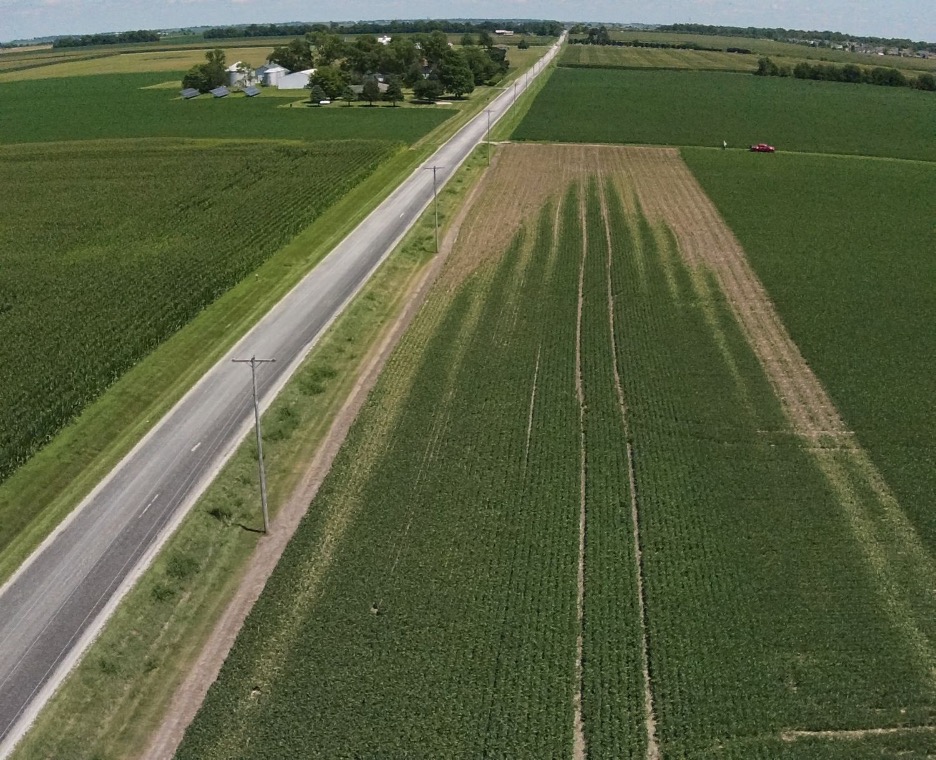It is that time of year again when spring gives way to summer heat. Crop planting has all but wrapped up across the state, and all emerged fields are growing at breakneck speed. Post emerge applications are mostly complete on corn fields and post emerge applications in soybeans are in full swing. This time of year, it is not uncommon to notice oddities in your crop fields. Sometimes it is easy to jump to conclusions, that may not be accurate. Let’s go through a couple of scenarios and walk through some considerations.
Case 1: Deformed Leaves

Photo credit: Steven Gower
This is the most common problem this time of year in soybean fields. The first assumption is dicamba off target injury. I understand that assumption as a non-tolerant soybean is extremely sensitive to dicamba, but more often than not, that isn’t the case. Let’s ask a few questions to narrow it down.
- Is the response in a pattern, areas, or even across the entire field?
- Are certain areas worse than others?
- Has anything been sprayed on my field recently?
This response is called a “drawstring.” It is commonly confused with “cupping.” It is important to ask yourself if you can pick out any straight lines. Nothing in nature happens in straight lines. If you can see a pattern of double ups, it may be a cosmetic reaction to an herbicide applied to your field. I have actually seen soybeans do this during rapid growth periods with no herbicide applied. It can also be a response from drift, but the key to look for there is an increasing severity in an area from which the spray drift came from.
Case 2: Uneven Field

Photo credit: NC State
This is another commonly under-diagnosed problem in soybean fields. In my career, I’ve heard growers blame this on everything from uneven fertilizer distribution to sprayer damage. Let’s ask a few questions to get to the bottom of this.
- Is this in a 60- to 120-foot repeating pattern? If not, it’s likely not fertilizer or sprayer induced.
- Is it localized to areas of the field? Usually so.
- Is the field edge generally better looking than the rest of the field? If yes, that’s the tell-tale sign.
Compaction is far more common than anyone likes to admit. It can be quite prevalent across a field, especially if disked when too wet. Generally, the dead give-away is the outside couple of rows being much bigger and more robust than the rest of the field.
Case 3: Burned Crop

Photo credit: AGCO
Unfortunately, almost everyone is going to experience burned crop at one point in their career. Sometimes it may kill some crop, sometimes it may not cause any economic damage at all. I have had calls through my career where one grower accused another grower of drifting on his crop. If you find a “V” pattern in the field, it was not drift, it was sprayer contamination. In the instance I just referenced, the grower hadn’t cleaned the atrazine out of his sprayer screens before switching over to spray soybeans.
Hopefully you’ve found a few of these cases and questions helpful. In diagnosing field issues, it is best to take your time, not jump to conclusions, and look at all evidence. When you make a call to get another opinion (which I always recommend), do not reveal what you believe the problem is to the next person. Sometimes a fresh set of eyes is all that is needed to get to the bottom of the mystery.




 and then
and then